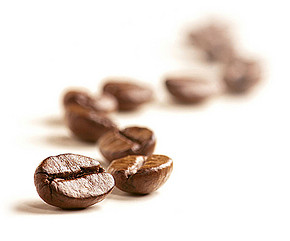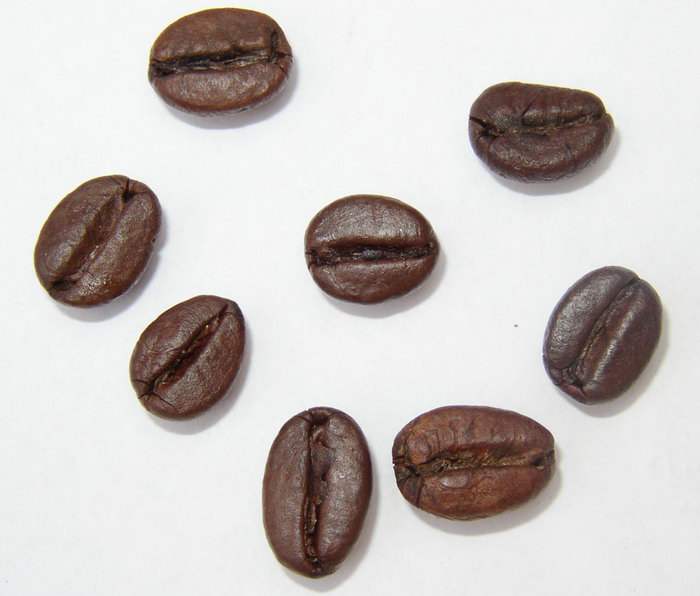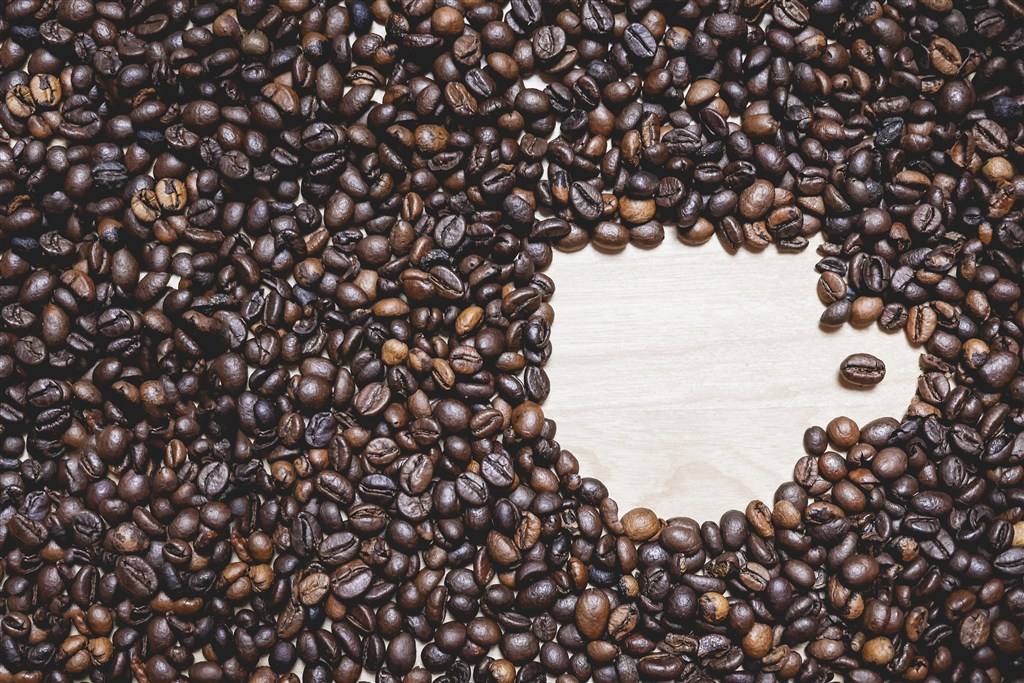An introduction to the History of Coffee producing areas in Mexico
Follow the caf é (Wechat official account vdailycom) and found that Beautiful Cafe opened a small shop of its own.
In recent years, the international community has increasingly recognized that Mexican coffee is of high quality. Now, the Mexican Coffee Association also wants to take this opportunity, together with the SCAA annual meeting held in Anaheim in May this year, to promote their brand new Logo and claim that they are about to launch a certification plan.
The new Logo of Mexican Coffee, which uses bright pink, blue and yellow, plus a strong colonial pottery totem, is a far cry from the Colombian Logo (coffee farmer Juan Valdez and his mule), but this Logo is as eye-catching and enjoyable as the latter.
In addition, the entire Mexican coffee industry also hopes that through this coffee bean logo with bright colors, it can be recognized by the world as the logo of fine coffee in the future, and it is also hoped that both the international boutique coffee market and ordinary consumers can recognize it in this way.
Roberto Giesemann, executive director of the Mexican Coffee Association, said: "whether you are an ordinary consumer or an importer, once you see this logo, you can pay attention to buy high-quality coffee beans with guaranteed quality, because these coffee beans must go through strict quality checks and pass testing before you can add this logo. "
Giesemann began to work on Mexico's boutique coffee transformation program a year ago. In the earlier era of the Mexican Fine Coffee Association (also known as Calicafe), his efforts have made buyers and importers everywhere once again deeply recognize the boutique status of Mexican coffee.
However, it is still a difficult road to maintain the stability of fine coffee quality. at present, only a few countries (such as Colombia) can claim loudly that their coffee is recognized by the world as fine coffee, because they have a model of Juan Valdez driving quality control.

Giesemann added: "at present, the primary goal of the Mexican Coffee Association is to implement certification, although the plan has been officially proposed by the authorities, but the actual implementation still requires continuous efforts. "
"We have enthusiasm, formal regulations and a plan, and now is the time to carry out this plan! In order to achieve strict quality control, we have set up many standard cup testing rooms in Mexico, and we have just completed the cup testing room at the headquarters of the Coffee Association of Mexico. "
The certification program is also backed by a decree signed by the head of state, which explicitly requires all coffee exporters to pick 5% of the lowest quality beans from their existing coffee beans, including defective beans that are incomplete, blackened, immature and improperly fermented, which are usually used to make instant coffee.
"We must improve the international image of Mexican coffee," Giesemann said hand in hand with its team promoting the boutique coffee certification program. Their goal is to increase domestic consumption at least twice as much.
Mexico originally uses 0.743 kilograms of coffee beans per person, and they will raise it to 1.5kg per person within four years, plus the federal government subsidizes the purchase of coffee beans worth about $18 million to $19 million. As a result, Mexico's domestic coffee consumption will increase from 13 million bags to 26 million bags.
Giesemann recently focused on advertising boutique coffee and educational promotion videos on major Mexican television stations, saying: "it is a very difficult task to increase coffee consumption per person, which is why we have set a target of 1.5kg per person within four years. He very much hopes that through these colorful TV commercials, many Mexicans who are addicted to Coca-Cola will be able to switch to coffee.
Mexico is one of the top consumers of soft drinks in the world, but it ranks last in terms of coffee consumption, which is undoubtedly ironic to Mexico, which ranks fifth in the world in terms of coffee production.
Almost all coffee-growing areas in the world were developed by colonists who increased their income by growing and exporting coffee and other crops.
It was only in Ethiopia that coffee was wild at first and then was grown because local residents began to like the black and hot drink.
In recent years, as the market price of coffee has fallen to an all-time low, many coffee-producing countries, including Mexico, have suffered an unprecedented crisis, so they tend to increase their coffee consumption in an attempt to reduce the impact of price fluctuations in the international market.
"We want to use the first 20% of all coffee for export and the remaining 80% of the lower grade for domestic consumption, which is our ideal," Giesemann said. "
"I think perhaps the most important issue for my sales team is how to convince 100 million people in Mexico to start drinking coffee and tell them," drinking coffee is harmless to your health. "and it's definitely healthier than drinking Coca-Cola all the time." "
The Mexican coffee industry has recently been under the pressure of low prices in the international market, so many farmers who produce coffee prefer the domestic market with better prices rather than the highly volatile international market.
Important Notice :
前街咖啡 FrontStreet Coffee has moved to new addredd:
FrontStreet Coffee Address: 315,Donghua East Road,GuangZhou
Tel:020 38364473
- Prev

Introduction to the quality level of Mexican Coffee
Following Cafe Review (Wechat official account vdailycom) found that Beautiful Cafe opened a small shop of its own Mexican coffee quality beans: Aldu Mara, Mexico. Taste characteristics: large particles, with a strong sweet, sour taste and good aroma. The best barbecue degree: medium fried or body fried. It is characterized by smooth taste, high acidity, medium mellow and slightly strong.
- Next

Introduction of Galapagos Coffee beans in Ecuador
Follow Cafe (Wechat official account vdailycom) found that the quality of Galapagos coffee is very good, which is mainly exported to Scandinavia and other Nordic countries, so our people know little about it. As coffee is drunk by people all over the world, the world coffee industry is also moving towards mass production mode, such as Galapagos on a small scale.
Related
- Detailed explanation of Jadeite planting Land in Panamanian Jadeite Manor introduction to the grading system of Jadeite competitive bidding, Red bid, Green bid and Rose Summer
- Story of Coffee planting in Brenka region of Costa Rica Stonehenge Manor anaerobic heavy honey treatment of flavor mouth
- What's on the barrel of Blue Mountain Coffee beans?
- Can American coffee also pull flowers? How to use hot American style to pull out a good-looking pattern?
- Can you make a cold extract with coffee beans? What is the right proportion for cold-extracted coffee formula?
- Indonesian PWN Gold Mandrine Coffee Origin Features Flavor How to Chong? Mandolin coffee is American.
- A brief introduction to the flavor characteristics of Brazilian yellow bourbon coffee beans
- What is the effect of different water quality on the flavor of cold-extracted coffee? What kind of water is best for brewing coffee?
- Why do you think of Rose Summer whenever you mention Panamanian coffee?
- Introduction to the characteristics of authentic blue mountain coffee bean producing areas? What is the CIB Coffee Authority in Jamaica?

